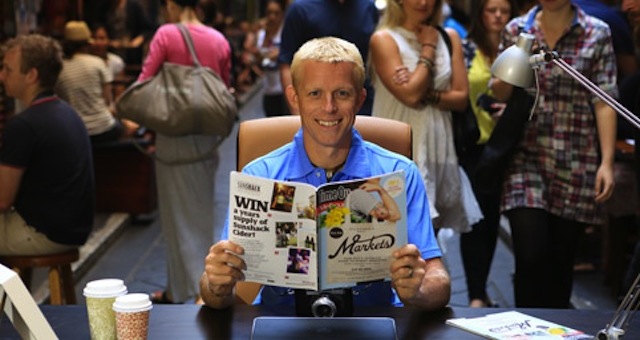Tourism Australia is bringing back the ‘Best Job in the World’, involving every state tourist board in the nation.
The AUD$4 million campaign targeting the international youth market, a segment which last year contributed nearly AUD$12 billion in tourism spending and a quarter of all Australia’s international visitors.
At the heart of the campaign is a global competition involving six of Australia’s State and Territory Tourism Organisations – each offering their own unique “Best Job in the World” as a winning prize.
Each position is valued at AUD$100,000 each ($50,000 salary and $50,000 of living expenses for six months) and one of them is a job as a lifestyle photographer as HM’s sister publication Time Out Melbourne magazine.
For that position – where Tourism Australia and Tourism Victoria have teamed up with Time Out Melbourne to create the opportunity – the winner will experience hidden secrets and share new trends, create city and country photo shoots, write about local events and creative people.
“We’re seeking a person from anywhere in the world who is skilled in photography, videography and writing,” Time Out says.
“They will report to the Time Out Melbourne editor and create features capturing the essence of Melbourne and the diverse experiences on offer in the state of Victoria.
“It will be their job to capture Melbourne’s laneways, cool cafés, hidden bars, major festivals, music events and life beyond the city, whether it’s surfing on the Great Ocean Road, skiing at Mt Hotham, abseiling Mt Arapiles, researching little penguins at Phillip Island or winemaking at a leading winery.”
The campaign was launched on Monday in London (Mar 4), Cairns, Australia (Mar 5) and will be revealed in Berlin today (Mar 6) at the ITB show.
The Best Jobs in the World initiative is part of a major international marketing push, which will focus upon promoting tourism opportunities provided by Australia’s Working Holiday Maker (WHM) program.
The campaign will target travellers between 18 and 30 years of age in Australia and overseas, with particular focus on international markets eligible for an Australian working holiday visas, including the UK and Ireland, the US and Canada, Germany, France, Italy, Sweden, Hong Kong, Taiwan, South Korea and Japan.
The six ‘Best Jobs in the World’ are:
-Chief Funster (New South Wales)
-Outback Adventurer (Northern Territory)
-Park Ranger (Queensland)
-Wildlife Caretaker (South Australia)
-Lifestyle Photographer for Time Out Melbourne (Victoria)
-Taste Master (Western Australia)
Tourism Australia Managing Director Andrew McEvoy said the competition provided an excellent platform to entice more young people from around the world to come to Australia to holiday, but also to work, helping to fill many unfilled tourism jobs across Australia, a key challenge for the industry.
“We’ve taken one of the most successful tourism campaigns in recent times – Best Job in the World – and made it bigger and better by coming up with a competition which represents the very best of our country: our breathtaking landscapes and scenery, our unique nature and wildlife, great food and wine and, of course, our huge sense of fun,” he said.
McEvoy said the competition was expected to appeal to youth travellers’ sense of fun and adventure.
“The youth market contributes more than a quarter of all Australia’s international arrivals,” he said. “These are visitors who tend to stay longer, disperse widely and often come back again, with their families, later in their lives.
“For many young people, Australia’s working holiday visa programs provide the economic means to fund travel plans, and this is at the heart of our new campaign.
“Despite recent challenges – such as the high Australian dollar and the global financial crisis affecting some of Australia’s traditional Western markets – the youth traveller segment remains an important part of Australia’s visitor mix,” McEvoy said.
The youth segment contributes AUD$12 billion annually in total tourism spending and delivers nearly 1.6 million (26%) of Australia’s international arrivals.
On average, youth travellers spend AUD$7,279 per trip in Australia (IVS: September 2012). In 2012, Working Holiday Makers contributed AUD$2.5 billion to the Australian economy. On average WHMs spend in excess of AUD$13,000 during their stay.
HM flew to London and Berlin with British Airways. BA flies daily to Berlin the author recommends flying in Club World (Business Class), which features flat-bed seats, hundreds of hours’ entertainment on demand, a great selection of wine and some of the best meals in the sky. For bookings, visit www.ba.com



